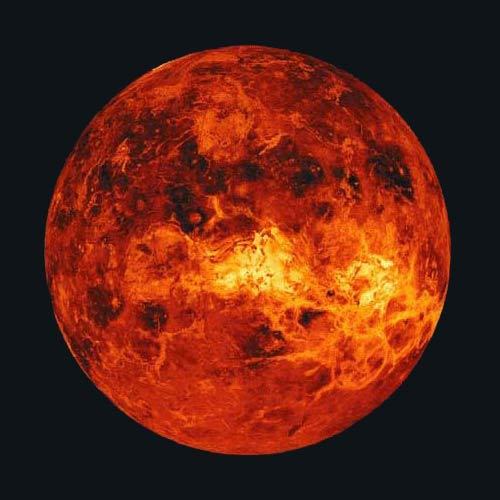See Venus and Moon Shine Together in Night Sky Friday
by Joe Rao, SPACE.com Skywatching Columnist | August 08, 2013 12:28pm ET
What’s that “star” next to the moon? Over the course of the next month, the moon will pass close to three bright “stars,” which are actually planets, starting with Venus on Friday August 9.
As darkness falls this evening (Aug. 9),be sure to take a look low toward the western part of the sky for a beautiful celestial tableau formed by a lovely crescent moon and the brilliant planet Venus.
This cosmic sight is virtually a repeat of their get-together on July 10. Venus will appear to hover well above and to the right of the moon.
These Venus-moon rendezvous occur on roughly a monthly schedule. If Venus were stationary and did not appear to move against the star background, then a Venus-moon encounter would occur every 27 days, 7 hours and 43 minutes. This is called a "sidereal month," which is the length of time it takes the moon to circle the Earth once, using the background stars as a reference point. [See amazing photos of Venus (Gallery): http://www.space.com/12437-venus-photos-planets-venusian-solar-system.html]
Since Venus and the moon were together on July 10, a return engagement might have been expected this past Tuesday (Aug. 6) if we tried to apply the "sidereal month rule" to this schedule. However, the rule doesn't work because Venus is not stationary. The planet moves in its own orbit around the sun.
From our earthly viewpoint, Venus, in fact, has appeared to shift considerably to the east against the star background. On July 10, Venus was in the constellation Cancer, but tomorrow it will seem to have shifted more than 35 degrees to the east where it resides in the constellation Leo.
Since the moon appears to move across the sky at about 13 degrees per day, it needs three more days to catch up to Venus. That takes us to tomorrow evening, where once again we will be treated to an eye-catching sight between the two brightest objects in the night sky.
Incidentally, another factor must be considered is our own Earth's movement around the sun. If, in fact, you looked for the crescent moon this past Tuesday night, you wouldn't have been able to see it. The moon was at new phase and hence too near to the sun to be seen. During the 27 days that elapsed since July 10, the Earth's movement around the sun would have caused the sun's position in the sky to shift to the east as well, in this case, right into the very same region that Venus and the moon occupied on July 10.
By tomorrow, however, the moon will be well clear of the sun and readily visible in the western sky with Venus.
The planet shines like a beacon through the fading dusk; the first planet to look for when the sun goes down. Search with binoculars soon after sunset about 10 degrees above the western horizon — the equivalent of the width of your clenched fist held at arm's length.
Later in twilight, Venus becomes plainly visible to anyone with a clear view of the western horizon. But the planet hardly looks better than it has for the last couple of months, remaining stuck at nearly the same altitude and brightness. In a telescope, Venus' disk becomes just a bit more gibbous (less full) as the summer wears on.
And lastly, if clouds obscure your view of Venus and the moon tomorrow evening, don't fret. Your next opportunity to see them together again will come on Sept. 8. That showing will be far more striking with the moon and Venus much closer together; less than one-third of the separation of tomorrow's encounter.
Editor's note: If you snap an amazing photo of the moon near the planet Venus — or any other night sky sight — and would like to share it with SPACE.com for a possible story or photo gallery, please send images and comments, including name and equipment used, to managing editor Tariq Malik at: spacephotos@space.com.
Joe Rao serves as an instructor and guest lecturer at New York's Hayden Planetarium. He writes about astronomy for Natural History magazine, the Farmer's Almanac and other publications, and he is also an on-camera meteorologist for News 12 Westchester, N.Y. Follow us @Spacedotcom, Facebook and Google+. Original article on SPACE.com.






No comments:
Post a Comment